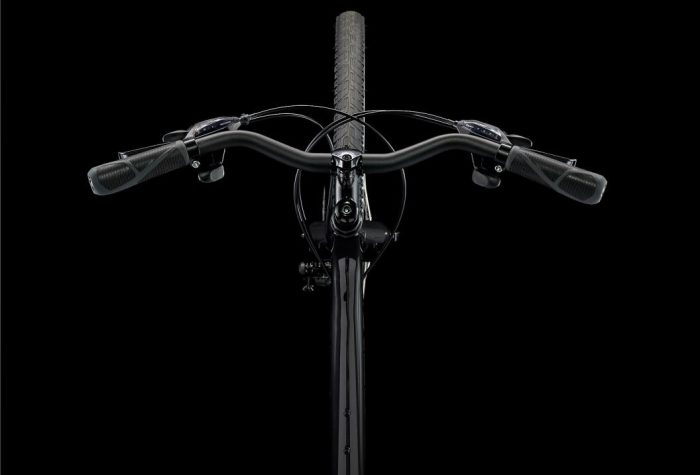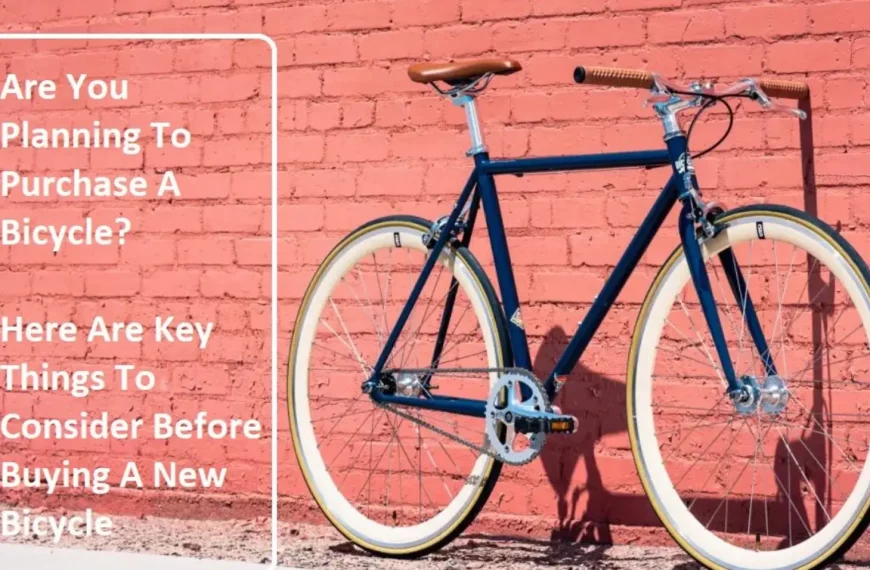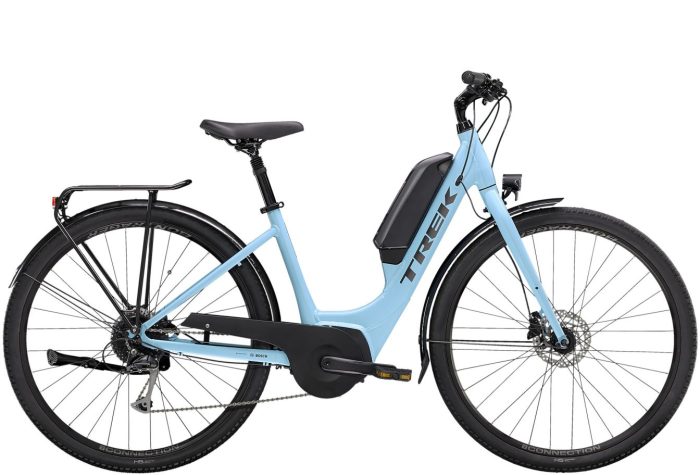Buyer’s Guide to Comfort/Hybrid Bikes
Looking for a relaxing, enjoyable outdoor activity? Need to get out of traffic quickly and without stress to run errands? How about a fantastic way to work out while conversing with friends and family at the same time? All these advantages are provided by the ideal bicycle. What then is stopping you?
Those days are over if you tried cycling years ago and struggled on a 10-speed. Modern bicycles are incredibly light and simple to ride, but most importantly, they set new standards for ergonomics and comfort.
Bicycles that are the most comfortable are naturally referred to as comfort bikes. Additionally, there are comfortable bicycles referred to as hybrid bikes. In fact, comfort and hybrid bikes are so opulently plush that you might find it difficult to choose which is best for you. We specifically authored this article for that reason.
Feel free to contact us with any questions after reading these instructions or stop by and ride a few Comfort and Hybrid bicycles to experience the wonderful ride for yourself.
First thing first, know yourself by asking these questions
To assist you in choosing the type and model of bike, consider the following simple questions:
Is price point more significant than high quality?
Do you frequently choose cutting-edge technology, or do you favor simple, functional designs?
What amount are you willing to spend? (This is a simple method for reducing the vast options.)
What kind of riding, most importantly, do you intend to do? A Comfort bike is a great option if you picture relaxing Sunday rides, family outings in search of the ideal picnic location, and having fun while you work out.
Quick trips to the store are also made simpler, more comfortable, and significantly less expensive than driving with this posh vehicle. The great outdoors is only marginally less comfortable than your couch thanks to features like suspension, plush saddles, and back-friendly geometry.
You want to avoid driving by using a quick, street-legal alternative. And an enjoyable, knee-friendly exercise regimen? For short commutes or even the occasional half-century, you want comfort as well as pedaling effectiveness. A hybrid bike, which is nimble and versatile, is ideal in this situation.
This cool machine is portable and rolls easily so you can pedal effectively on the pavement. Additionally, because it is intended for sporadic off-road use, you can benefit from the best of both cycling worlds: the convenience of paved roads and the solitude of backcountry routes.
What Is A Comfort Bike?
The term “comfort bike” implies that other bikes are not comfortable in some way. This is not exactly accurate. Instead, some road and hybrid bike models simply lend themselves better to riders with more experience due to their geometry and contact points, such as handlebars and saddles.
If you are not used to riding a bike, you may experience pains and strains from holding yourself in the unusual position that a bike forces you into. A comfort bike offers a compelling alternative to suffering through these uncomfortable aches during your first miles of cycling.
As the name implies, a comfort bike can make the transition from not riding a bike at all or just a few miles a week to more frequent rides more bearable. But comfort bikes are not just for new cyclists. They are also great for experienced riders. A comfort bike has much better geometry for people who are less flexible, have nagging or persistent injuries, or both.
These bikes are made to provide maximum comfort while riding, which in turn helps lessen lower back pain and neck pain. This helps keep your posture upright.
Bikes typically have a step-through frame or a sloping top tube, making mounting and dismounting much simpler.
Comfort hybrid bikes frequently have front fork suspension to lessen road vibrations caused by potholes and bumps.
Hybrid Vs. Comfort Bike
What distinguishes these regal rides then? Wheel and tyre size provides the clearest distinction between the two, as shown below:
Comfort bikes
Comfort bikes the standard 26-inch tyre used by mountain bikes is used by comfort bikes. These wide tyres offer a cozy air cushion that floats over obstacles and uneven ground. Also, if you live on a dirt road, you can install knobby tyres.
Hybrid bikes
Hybrid bikes the 700c standard for road bikes is typically (but not always) used by hybrid bicycles. These tyres have easy pavement traction for quick acceleration and straightforward ascent. For riding on various surfaces, this size can accommodate tyres with a width of 23 to 42 millimeters.
Now that you are aware of the typical variations in wheels, the following table lists the additional characteristics that distinguish these various bicycle types:
| Comfort bike | Hybrid bike |
| frame that prioritizes comfort | Frame made to make pedaling comfortable and effective |
| The relaxed riding position is better for your back than most easy chairs. | Adjustable parts provide a comfortable upright position or a position that emphasizes speed (your choice) |
| Smooth suspension lessens the impact of bumps. | Fast and effective at absorbing vibration are suspension and strong, light materials. |
| Foam, gel, and spring saddles offer luxurious seating. | Smooth, plush saddles provide efficient pedaling while also being comfortable. |
| A super-plush ride is provided by the tyres high air volume! | Higher speeds and longer rides are made possible by the tyres high air pressure. |
How to make cycling more comfortable?
The use of a comfort bike is not the only way to make riding more pleasurable and enjoyable; you can also make significant advancements in other areas of your gear and attire.
Cycling saddle sores are an uncomfortable aftereffect that can be brought on by wearing improperly fitting shorts or a saddle that is not right for you.
It can be difficult to find the ideal saddle for you. Buying a pair of padded cycling shorts is also important because they will be placed in direct contact with the most delicate part of your body and will help to increase your comfort while cycling.
Additionally, you should avoid wearing underwear with padded cycling shorts because they will interfere with the functionality of the padded shorts’ built-in moisture-wicking technology. Due to the unsuitable and improper placement of the seams and material, the additional layer of underwear is likely to cause uncomfortable chafing.
In addition to selecting the proper saddle and pair of cycling shorts, a generous application of chamois cream will help reduce friction between your skin and clothing, reducing the risk of saddle sores and enhancing ride comfort.
After riding your bike, rolling out your quads, hamstrings, glutes, lower back, and calves with a foam roller can help with recovery and prevent injury.
Components and Parts
The designs of hybrid bikes and the components they are equipped with can differ greatly; options range from those built for fitness gains to those more focused on comfort.
Frame Materials
The frame, which comes in a variety of materials, is the structural foundation of your new vehicle. Here are some factors to consider when choosing:
Steel that is high tensile
PROS: Strong, most cost-effective, and a pleasant ride; typically found on entry-level bikes
CONS: If not maintained, it rusts and weighs more.
Chromium Steel
PROS: A cheap steel alloy that is lightweight and provides a smooth ride
CONS: More expensive than high-tensile steel and rusts if not maintained.
Aluminum
PROS: Great ride, light weight, affordable, resistant to rust and corrosion.
CONS: Costly compared to high-tensile steel
Other (carbon fiber, composites of carbon and aluminum)
PROS: Great ride, strongest, lightest, and resistant to rust and corrosion.
CONS: Highest price
Suspension
Today’s hybrid and comfort bikes frequently have suspension forks.
It compresses to absorb shock from obstacles like bumps, ruts, and cracks. This makes sure that even on uneven surfaces, you maintain control. Additionally, it protects you from shocks for a ride that is smoother and more comfortable.
Elastomers or coil springs are typically used in forks. We suggest riding various bicycles and contrasting how various forks feel. Choose that model of bicycle if you prefer the handling and comfort of one over another.
Another excellent feature found on Comfort bikes and Hybrids are suspension seat posts. These offer a great, portable way to smooth out bumps and add comfort where it is most needed.
Your seat and lower back would not otherwise be subjected to vibration and impacts. You will adore how they smooth out the rocky terrain and rutted roads.
Remember that you can add a suspension seat post to any bike you find that you love if it does not already have one (not all Comfort bikes and Hybrids come with them) (sold separately).
Gearing
One of the most significant developments in bicycle technology is better gearing, which makes it simpler than ever to switch gears and comfortably navigate even difficult terrain.
Because modern bikes have a variety of simple-shifting and hill-climbing gearing options, we asked you earlier to consider your riding location. You can get by on a bike with fewer gears if the terrain you plan to ride on is flat as opposed to rolling or hilly.
For instance, you can find bikes with 7 to 8 speeds that are perfect for flat bike lane excursions or neighborhood rides. A 24- or 27-speed drivetrain is preferable if you intend to tow a trailer and encounter some hills because it offers lower gearing, which significantly reduces the extra effort required to climb while towing a trailer or carrying gear.
No matter which gearing you select, you will discover that modern bikes shift with a flick of the wrist using motorcycle-style twist shifters or a straightforward push of a button-style lever. When shifting, you no longer need to “feel” for the gear. Simply shifting into gear on the bike makes pedaling much simpler.
You will adore it, and all your concerns about moving are allayed. In fact, a display on a lot of Comfort and Hybrid bikes tells you exactly what gear you are in.
Brakes
These contemporary bicycles also have sophisticated braking. Consequently, you have more control over your speed and can stop quickly and with little hand effort. If it has been a while since you have ridden, the new systems, which are comparable to power brakes in a car, will impress you.
Most Comfort bikes and Hybrids come with hub brakes that are built into the front and/or rear hubs, rim brakes known as V-Brakes, linear- or direct-pull brakes, or rim brakes called V-Brakes.
The newest brake technology, disc brakes, which have calipers and rotors in the center of the wheels like car brakes, may be found on some of these types of bicycles, though it is still uncommon.
Any given bicycle will typically have brakes appropriate for the riding style it was intended for. For instance, V-Brakes are effective stoppers and great for all types of riding, including casual neighborhood rides and daily commutes, even inclement weather.
Bicycles with hub brakes are typically made for less demanding riding and sacrifice durability and minimal maintenance for maximum stopping power.
Disc brakes are the best braking option and require the least amount of maintenance, though they are not commonly found on Hybrid or Comfort bikes yet. They are also the most expensive option.
Remember that nothing compares to a test ride to experience the various brake types and determine which you prefer. Based on the riding, you intend to do, we can also offer recommendations.
Saddles
The saddle is one of the parts on Comfort and Hybrid bicycles that has been most improved, even though you might not be able to tell by looking. These seats are so comfortable thanks to the ergonomic features and comfort features those engineers and designer went beyond to include that you are likely to stay seated at stops while your ride partners are relaxing on the grass.
Anatomical shapes, cutouts that relieve pressure on soft tissue (preventing numbness and pain), flexible frames, gel padding, and cushioning springs are all included. All these things can occasionally be found in the same seat.
However, the most crucial factor is ensuring that the bike seat is the right one for you. Since everyone is unique, you should sit in the seats and give them a test run to make sure they are comfortable for you.
Wider tyre width
Wider tyres are more comfortable because they can operate at lower pressures, which allows them to better absorb road imperfections.
For comfort, maintaining the proper tyre pressure is also crucial. There will be a minimum tyre pressure figure specified on the tyres; while riding, this should always be met. You can increase the pressure for a faster ride, though you will feel the road more, if the resistance feels a little sluggish.
Discovering a balance between comfort and speed that feels right for you is key to determining the best tyre pressure.
You can repeatedly get your tyres inflated to the desired tyre pressure using a track pump with a pressure gauge.
Additional Advice
Assuring that the Comfort or Hybrid bicycle you choose is the correct size and then fine-tuning it to fit you properly may be our most important task in assisting you.
We advise setting aside some money from your cycling budget to buy some essential cycling accessories to go with that new bike.
For instance, you should buy a helmet if you do not already have one. More so than ever, new models are safer, more accessible, lighter, and more comfortable.
Additionally, you will need a strong lock to safeguard your purchase. It is also a clever idea to buy a small flat-repair kit and a pump if you intend to ride farther than you would like to walk back.
There are also many additional items to make cycling better, including energy foods, cycling shorts, eyewear, gloves, and books and magazines with a wealth of excellent cycling knowledge.
What to Look for When Buying a Comfort Bike
Everyone has a different idea of their ideal bike, and the term “comfort bike” can refer to a remarkably diverse range of bicycles that are all packed with extra features. Consider the following section as your one-stop shop for learning everything about comfort bikes because you might not be sure what features you will necessarily need or want.
Frame Shape and Materials
The geometry of many of these bicycles will be slacker and more upright than your standard road racing bikes because the frame of a comfort bike is designed to make your ride as comfortable as possible. The ability to sit upright will prevent any unneeded aches and pains from being caused by cramming yourself into a tight, tucked position, allowing you to ride for a lot longer.
The materials used to build a comfort bike frame do not vary all that much, with the majority choosing an extremely durable high-tensile steel or a lighter, more durable aluminum alloy. Both have advantages and disadvantages, with steel being the most durable but also the heaviest and most rust-prone of the two. On the other hand, aluminum is significantly lighter than steel, does not rust, but is occasionally slightly more expensive.
Your budget will determine a lot of the frame material options. Both materials are extremely durable should you fall a few times, but each has inherent advantages and disadvantages, so it is wise to be aware of those before making your decision.
Handlebars
The dropped handlebars of sporty road bikes are replaced by flat, wide handlebars with plush, comfortable grips on comfort bikes. For the most comfortable riding position, one that keeps your body upright and away from the aero Quasimodo tuck you would have to adopt on a road bike, use flatter bars or the signature curved handlebars that are present on many of our comfort bikes.
A comfort bike’s wide handlebars will give you more control if the streets become congested and dangerous. You guessed it—comfort—is further improved by wider bars. Your shoulders are compressed by the narrow bars, which may cause minor pains in the future.
Without a pair of plush, soft grips, no super-comfy handlebars would be complete. Your hands will appreciate it on those longer rides if you can find a bike with a vibrant pair that is both stylish and comfortable to touch.
Brakes and Gearing
Rim and disc braking systems are the two primary types. Although disc brakes have better stopping power than rim brakes, boy are they a pain to maintain. Rim brakes are ideal for the type of riding a comfort bike will be doing. They are straightforward, simple to install and repair, inexpensive to replace, and incredibly responsive when it comes to braking.
For good reason, comfort bikes are not exactly known for having an abundance of gears. These bikes do not need the extensive range of gears that many contemporary race bikes have because they are not col-crushing machines or extremely quick sprinting machines. Comfort bikes, on the other hand, favor a limited number of gears, just enough to help you ascend those brief, steep hills, but not too many to make maintenance difficult and annoying.
Some comfort bikes even do away with the option of changing gears altogether in favor of a single gear design. Single speed bikes might be the best option if you simply want a bike with a get-up-and-go attitude and little maintenance requirements for riding around a flat city.
Racks and Fenders
Most of the time when you are wandering around the city, you will need to carry a few things. While backpacks are great, they can quickly become painful on longer rides. You have a lot more carrying capacity with a rack on the back or even the front of the bike, and your ride will be more enjoyable overall.
Many bikes in the comfort category give you the choice to customize your ride and increase carrying capacity by adding a front basket or a convenient surfboard rack. A comfort bike can transport everything, including the kitchen sink, wherever you plan to cruise.
Fenders are attached to the front and back of the bike in a manner like that of racks, but instead of carrying all your necessities and token trinkets, they keep your butt dry and clean. Nothing is more miserable than getting to your destination only to squelch as you settle into your filthy, damp pit of misery. Most of the muddy road spray will be prevented from flaring up your butt and into the faces of those who are riding behind you if you have fenders; this is a common biking courtesy that will help you make friends rather than alienate them.
Tires
Tires are crucial because they are the only component of the bike that actually makes contact with the ground when riding upright, of course. They give you confidence, significantly enhance handling, and aid in keeping you upright—all crucial elements when it comes to biking.
In comparison to road bikes and hybrid bikes, comfort bikes frequently have wider tyres, more in line with a mud-loving mountain bike. A tyre that is wider and has more traction will give you a smoother ride by absorbing many of the small bumps in the road while still maintaining traction. Since comfort bikes are not really designed for speed, you can afford to mount a set of extremely wide, extremely comfortable mountain bike tyres. What matters most is how comfortable and enjoyable the journey was, not how quickly you got there.
The ideal tyre width is anything greater than 32mm, with 42mm being the ideal width. Just something to keep in mind: the wider the tyre, the more comfortable and secure it will be.
Contact Us
If you have any suggestions or advise, please feel free to reach us via our Contact Us here.
Our articles are developed after considerable research and studies online and also including seeking informational experience based tips from professional rides. Key sources of information are interviews, google search and youtube.




